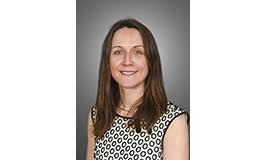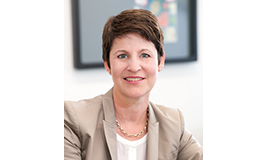Bone Healing Special Issue in Honour of Professor Stephan Perren (1932-2019)
Bone, as we are frequently reminded, is one of the few human organs with the ability to heal without scarring, often restoring full function after injury. Yet despite this remarkable intrinsic capacity to regenerate, bone healing continues to present major clinical problems. Examples include delayed and non-unions of fractures, along with the healing of large segmental defects and cranial defects that never heal spontaneously in adults. Other indications, such as spinal fusion and the osseointegration of implants, are iatrogenic in origin.
Despite the considerable volume of research into the biology and mechano-biology of bone healing, the clinical treatment of choice for repairing bone remains autograft, a technique introduced over 100 years ago. Recombinant BMP-2 and BMP-7 were approved nearly two decades ago for limited indications to promote bone formation for specific clinical conditions. However, BMP-7 is no longer available for this purpose and the effects of BMP-2, as the active component of the product Infuse® , have been incremental rather than transformative. Furthermore, the associated costs remain prohibitive for many healthcare systems.
Various approaches are being taken in an attempt to improve the current state of affairs. These include, but are not limited to, studies in the basic biology of osteogenesis, manipulation of gene expression, the use of stem and progenitor cells, identification and use of growth factors delivered by smart matrices or by gene transfer, immuno-modulation, sophisticated manipulation of the mechanical environment and the development of osteogenic scaffolds. Moreover, there is also a genuine need for better animal models with which to evaluate the outcomes of such studies in early pre-clinical screenings.
Investigators who are active in these fields of research are invited to contribute articles to this special issue of eCM in honour of one of the true pioneers of osteosynthesis research, Professor Stephan Perren.
Keywords: Osteogenesis, fracture healing, segmental defect, fixation, osseointegration, dynamisation, biomaterial, scaffold, osteo-immunology, stem-progenitor cell, angiogenesis, growth factor, gene therapy.
Submission deadline: 28th of February 2021.
All papers (invited and open submitted) undergo full peer review. All accepted manuscripts will follow the Article Processing Charge (APC) policy of eCM.
Publication: immediately upon acceptance
Editorial team
|
eCM Scientific Editor Prof. Chris Evans, PhD |
Chris Evans is the John and Posy Krehbiel Professor in Orthopedics and Director, Rehabilitation Medicine Research Centre at the Mayo Clinic, USA; he is also the Maurice Edmond Müller Professor of Orthopaedic Surgery Emeritus at Harvard Medical School. He earned a BSc in Genetics and Microbiology and a PhD in Biochemistry from the University of Wales, UK, followed by a post-doctoral fellowship in Molecular Biology at the Université Libre de Bruxelles, Belgium. He subsequently took a junior faculty position at the University of Pittsburgh, USA eventually becoming the inaugural Henry Mankin Professor of Orthopaedic Surgery before leaving for Harvard and then Mayo Clinic. Prof. Evans’s research focuses on the development of biological solutions, particularly gene therapy, to clinical problems in orthopaedics. He and his colleagues have developed an arthritis gene therapy that is presently in clinical trials and have pre-clinical programmes in several additional areas include bone healing. Prof. Evans is a former President of the Orthopaedic Research Society and is a Fellow of International Orthopaedic Research, the Orthopaedic Research Society, Swansea University and the Learned Society of Wales. Early in his career he spent 4 happy months collaborating with Prof. Hans Gerber at the Laboratory for Experimental Surgery, now the AO Research Institute, in Davos and he has returned frequently ever since. This led to an enduring friendship with Prof. Stephan Perren, to whom this volume of eCM is dedicated.
|
|
|
eCM Guest Editor Dr Vaida Glatt
|
Dr Vaida Glatt is an Assistant Professor and Director of Research at the Department of Orthopaedic Surgery at the University of Texas Health Science Centre in San Antonio, TX, USA. She has extensive expertise in preclinical and translational in vivo models developing novel strategies for the treatment and regeneration of bone. One of her primary research focuses is in the field of mechano-biology, where she was the first in the field to accelerate bone healing by a process called Reversed Dynamisation. Additionally, Dr Glatt’s focus is on tissue regenerative medicine where she is actively developing therapies to improve the regeneration of bone tissue by means of improving the effectiveness of BMP-2 while minimizing the side effects and doses required. Dr Glatt is the author of over 70 publications in peer-reviewed journals and is a contributing book author. She has received local, national, and internal research grants in the field of bone healing. She is on the editorial boards of multiple journals in the field of Orthopaedics. Dr Glatt has two pending patents relating to the compositions and methods of improving treatments and accelerating the regeneration of bones.
|
|
|
eCM Guest Editor Prof. Dr Anita Ignatius |
Anita Ignatius is Director of the Institute of Orthopedic Research and Biomechanics at Ulm University, Germany. After a degree in Veterinary Medicine, her research career began at the Institute of Pharmacology, University of Munich, where she received her doctoral degree in 1990. 1993, saw a move to Ulm University. Since then, she has acquired extensive research expertise in the musculoskeletal field with a focus on bone regeneration and biomaterials. In 2002 Anita Ignatius gained a "Habilitation for Experimental Surgery" and became Associate Professor. She was awarded full Professorship and appointed Director of the Institute of Orthopedic Research and Biomechanics Ulm, Germany, in 2008. Since then, she has led a multi-disciplinary research team whose areas of expertise include medicine, engineering and science. The institute covers both biology and biomechanics of the musculoskeletal system and collaborates with many national and international research institutions, including the AO Research Institute (ARI) in Davos, as well as partners from industry. Anita Ignatius has coordinated and contributed to many national and international research clusters funded by national and international agencies. Her publication list includes more than 330 peer-reviewed articles. She is currently a board member of the AO Foundation and an elected member of the review panel of the German Research Foundation.
Published manuscripts Defective bone healing remains a remarkably recalcitrant clinical problem. Research aiming to stimulate bone regeneration is an inter-disciplinary endeavour that needs to be studied at multiple levels; this is reflected in the scope of the papers collected into this Special Issue of the eCM journal. Different communications address the topic from the point of view of immunology, cell biology, mechanobiology, animal models, scaffolds, metabolism and fracture fixation. The important topics of translation and clinical application are also represented. Collectively, these articles summarise the state of the art in bone healing research and indicate where the field might be heading in the near future.
| |



